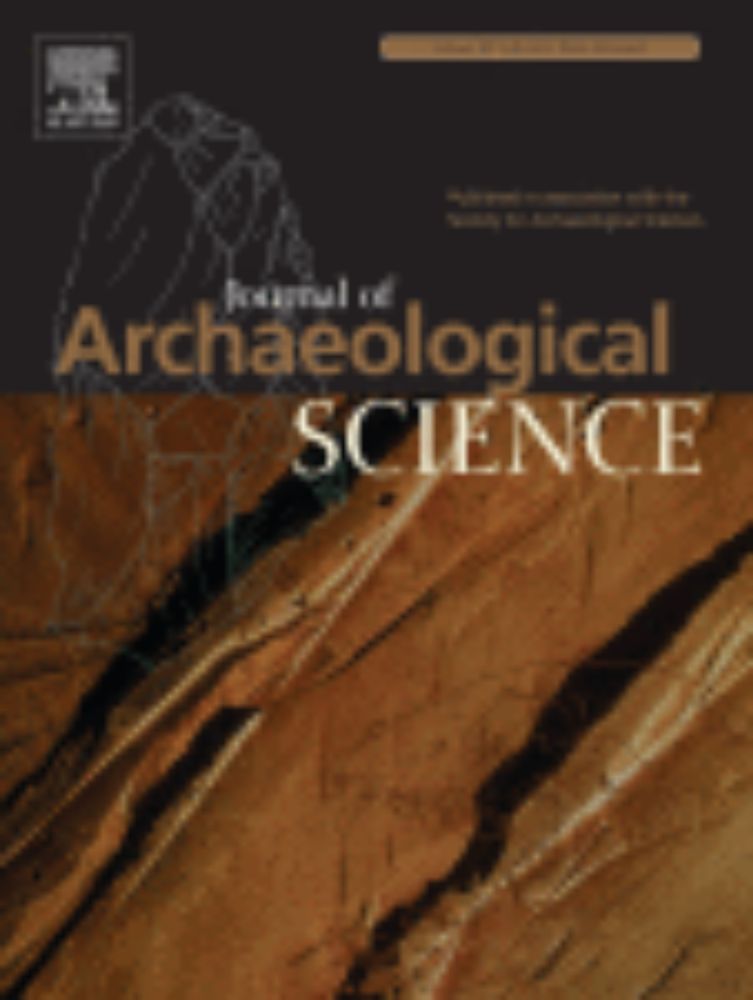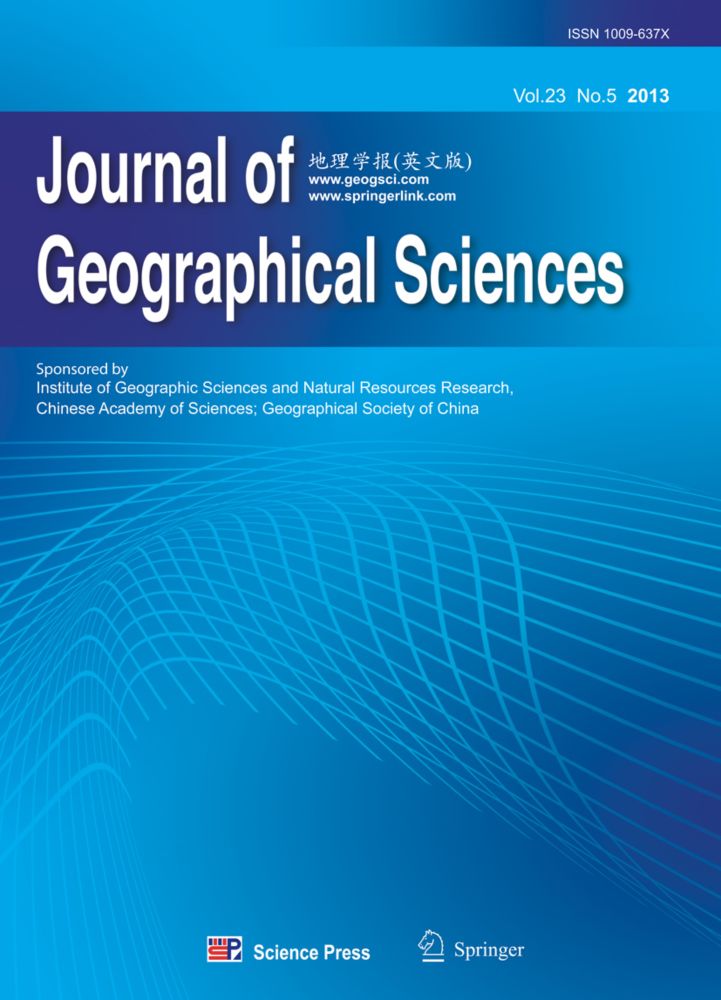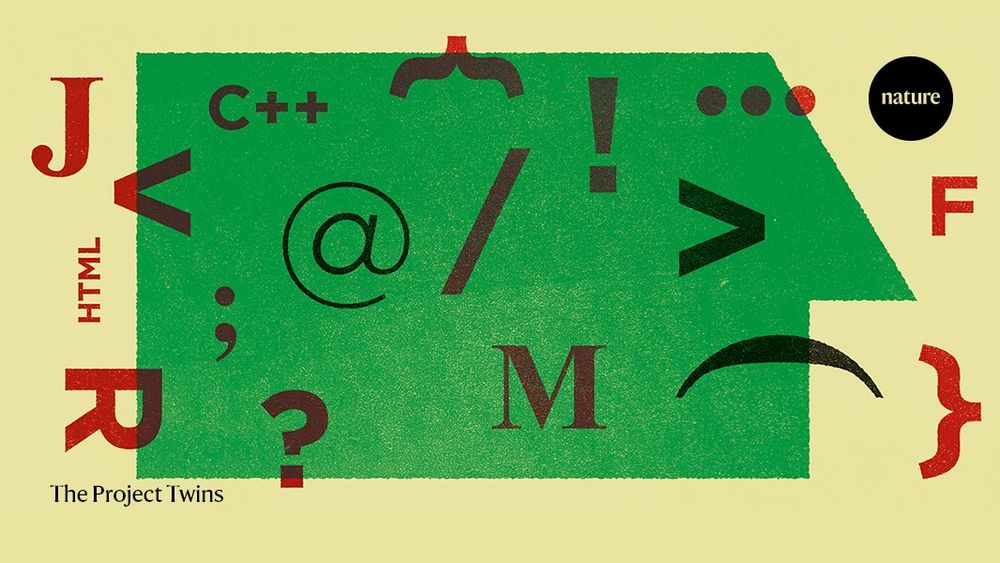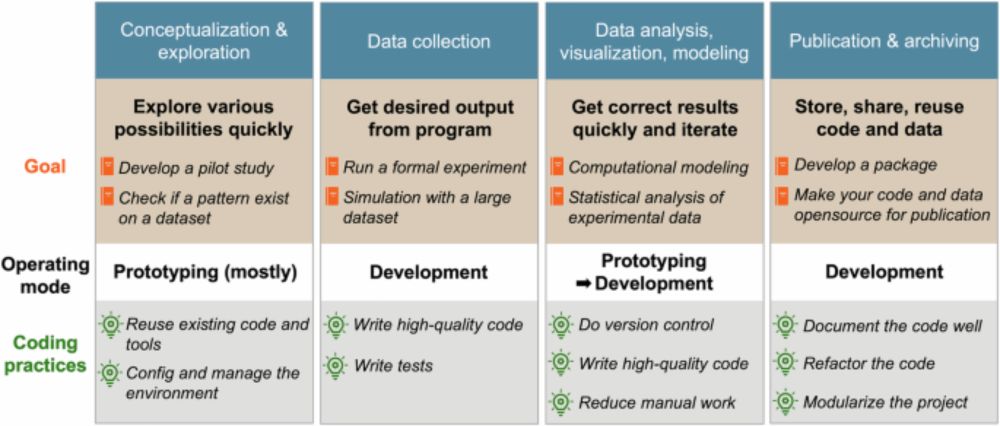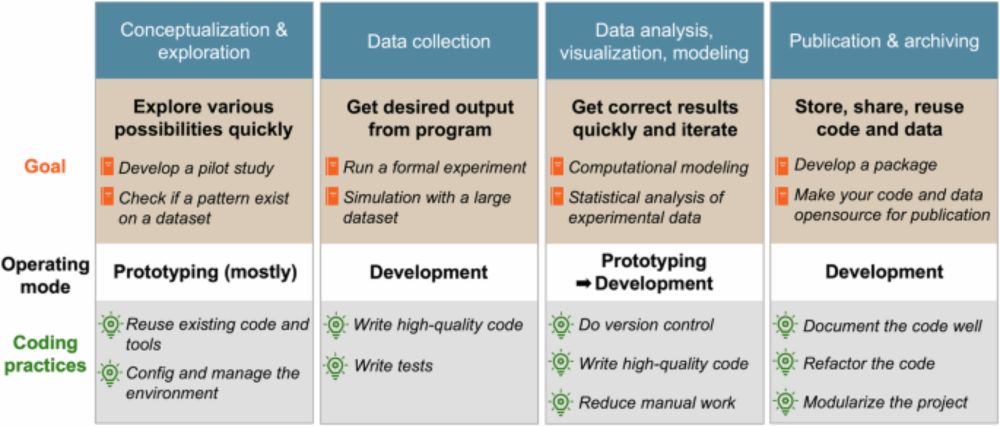
Why do societies reliably develop strikingly similar traditions like dance songs, hero stories, shamanism & justice institutions?
In a new BBS target article, I propose a theory for such "super-attractors" + cultural evolution more broadly. Now open for commentary: www.cambridge.org/core/journal...
25.08.2025 14:47 — 👍 65 🔁 28 💬 1 📌 1

Co-organizing a session at #SAA San Francisco with T. Kovach: "Toward an Integration of Quantitative Approaches in #Lithic Analysis." A few spots still open! Abstracts due Sept. 4.
Email me if you’d like to join the conversation: armando.falcucci@nyu.edu
#Archaeology #FlintFriday #FossilFriday 🏺
22.08.2025 10:30 — 👍 8 🔁 5 💬 1 📌 0
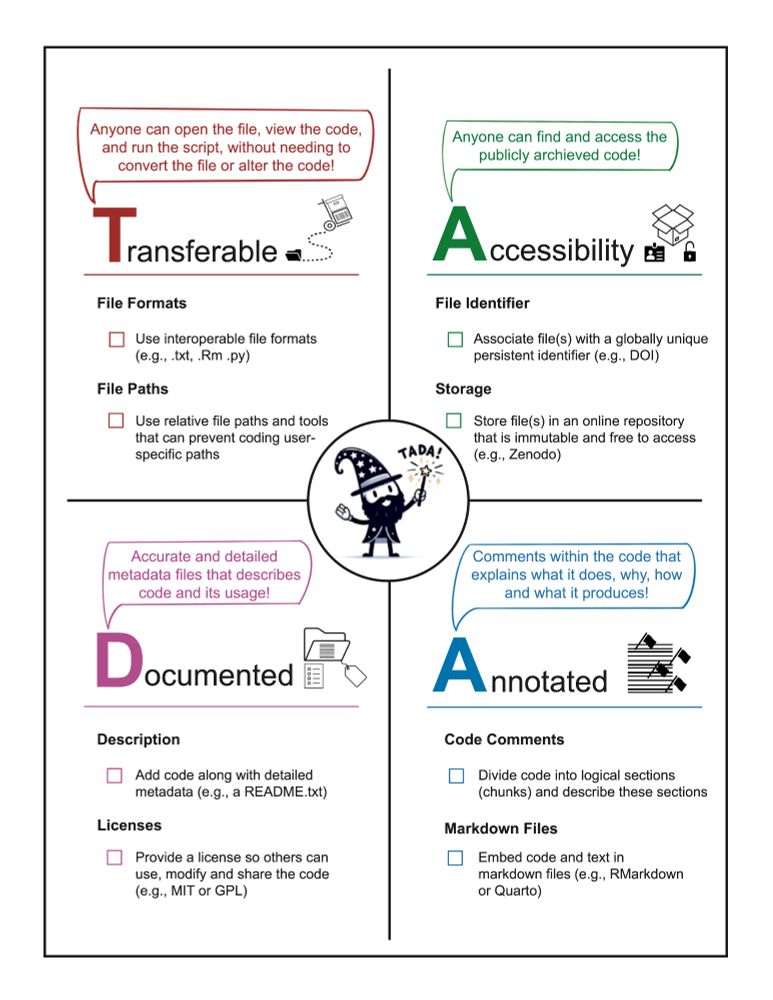
Here's said mascot along with an excellent checklist by @shreyadimri.bsky.social
02.08.2025 17:05 — 👍 19 🔁 8 💬 1 📌 1
TADA! Simple guidelines to improve code sharing
🎉New preprint!
"TADA! Simple guidelines to improve code sharing"
tinyurl.com/8rmnwjrk
We present simple guidelines to help researchers of all coding levels improve the transparency and reproducibility of their analytical code, TADA!
Transferable, Accessible, Documented, Annotated.
02.08.2025 17:05 — 👍 100 🔁 53 💬 2 📌 3
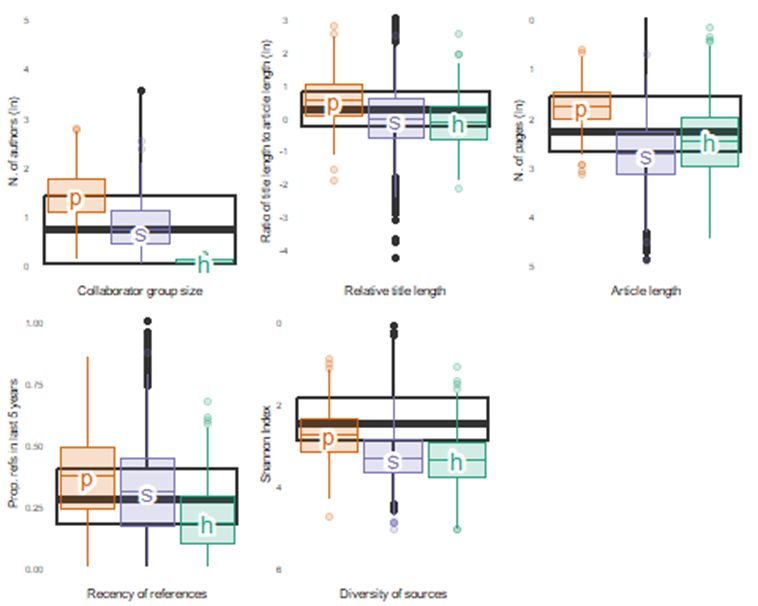
Boxplots comparing data for top-25 journal metrics and data from Fanelli & Glanzel 2013 for Physics, Social Sciences and Humanities. Most of the time Archaeology fits pretty close to Social Sciences, except for Diversity of sources where it harder than Physics.
New #preprint online: Reproduction and replication of @benmarwick.bsky.social (2025), with data from OpenAlex.
Accessible as interactive html version: aqueff.github.io/replication_...
and more traditional manuscript with doi here: doi.org/10.31235/osf...
Is archaeology a hard or soft science? 🏺🧪
08.07.2025 14:32 — 👍 4 🔁 1 💬 1 📌 0
Yes, you can see some of the most recent debate on this question in the comments where I shared the paper here: www.reddit.com/r/Archaeolog...
07.07.2025 09:25 — 👍 0 🔁 0 💬 0 📌 0
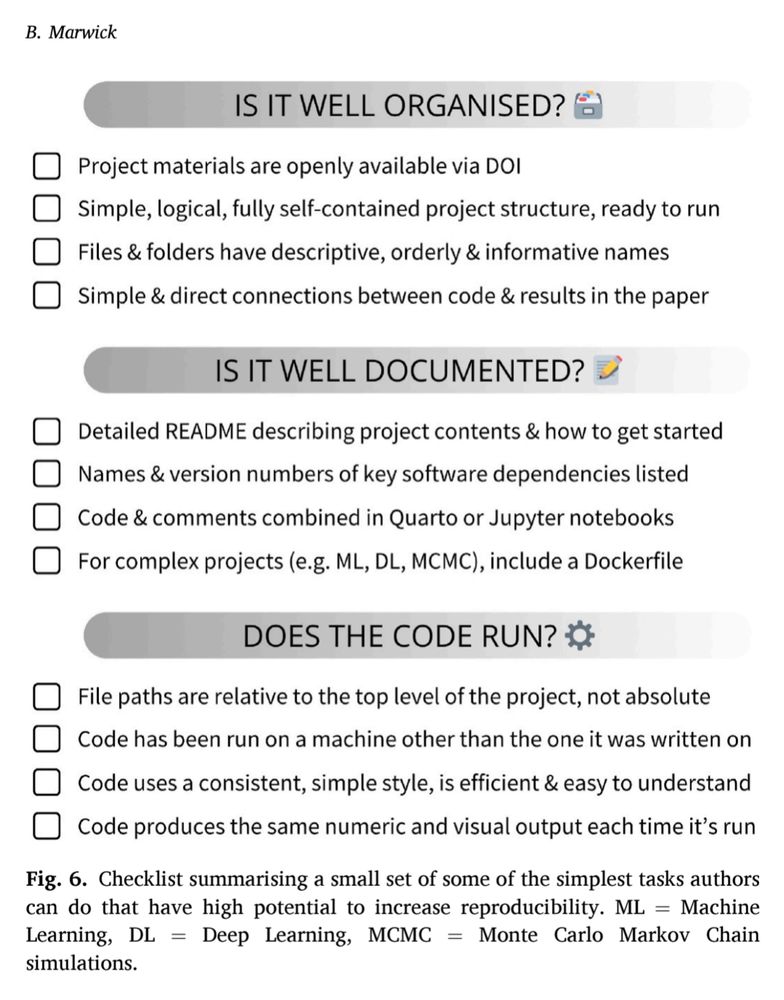
Checklist of items researchers can do to improve the reproducibility of their code
Here is my checklist summarising a small set of some of the simplest tasks you can do that have high potential to improve the reproducibility of your analysis code.
This is based on my year of reproducibility reviews for the J. of Archaeological Science:
authors.elsevier.com/a/1lHjN_6yUM... 🧪🏺
06.07.2025 01:25 — 👍 109 🔁 32 💬 3 📌 3

First page of the journal article

Fig 1 boxplot

Fig 2 scatter plot panel

Fig 3 ridgeplot panel
Is archaeology a science? 🧪
Here's my new paper that has a go at answering this question by analysing 10,000 journal articles:
authors.elsevier.com/a/1lHjN_6yUM...
18.06.2025 16:59 — 👍 23 🔁 7 💬 1 📌 1
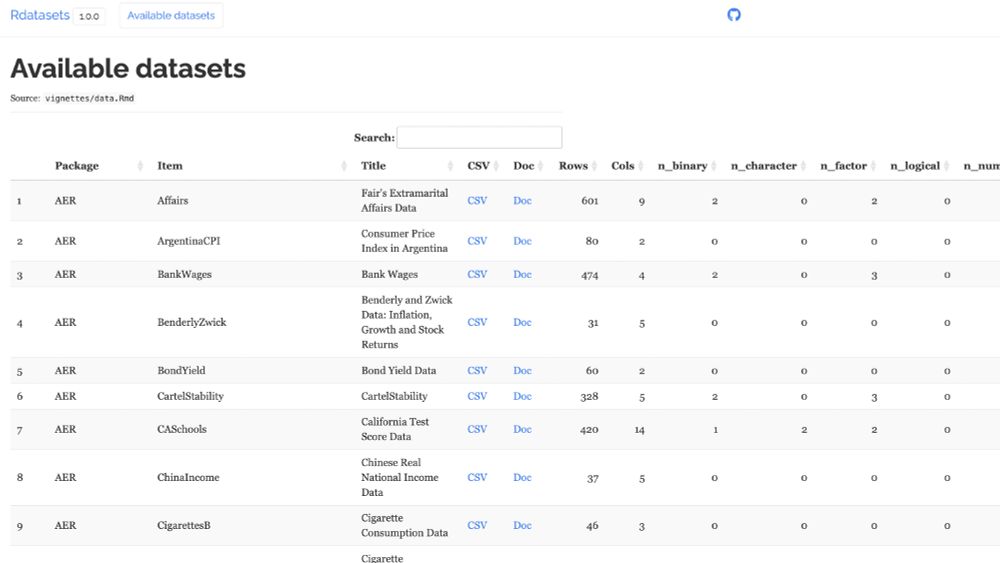
🚨 Big milestone for Rdatasets 🚨
The web archive now hosts 3400+ free and documented CSV datasets. Fantastic for teaching and testing!
And {Rdatasets} is a new #RStats 📦 for easy download and search
Web archive: vincentarelbundock.github.io/Rdatasets
R 📦: vincentarelbundock.github.io/Rdatasetspkg
06.06.2025 17:39 — 👍 260 🔁 80 💬 3 📌 1
It's CES election time! We have FOUR positions that have come up for renewal, so please consider nominating yourself or your colleagues. Nominations close June 20th, with voting from June 30th -July 4th.
04.06.2025 11:15 — 👍 12 🔁 16 💬 1 📌 1
There are lots of benefits of releasing code alongside scientific publications - when you do, you might want to consider your code's "Reporting, Running, Reliability, Reproducibility, Robustness, Readability, and Release."
25.04.2025 11:40 — 👍 8 🔁 4 💬 0 📌 0
As long as social science journals don’t implement actual code review — not just mechanical reproducibility checks — there’s no good way to ward off such errors or abuse. Not every publication has a shocking result begging for a replication, like the one flagged by @johannarickne.bsky.social.
09.05.2025 13:00 — 👍 30 🔁 4 💬 3 📌 2
Thank you for your important work! It is crystal clear that code and data publication alongside each manuscript is the only way forward for science. Manuscripts with data analyses that do not publish code and data should not be accepted for publication anymore.
09.05.2025 10:21 — 👍 31 🔁 1 💬 2 📌 0

Banner for American Antiquity promoting Research Transparency & Reproducibility, featuring an image of individuals conducting an archaeological excavation.
SAA journal #AmericanAntiquity is advancing #researchtransparency in #publishing. Read how, alongside an introduction to Associate Editor for #Reproducibility, Dr. Alan Farahani.
Approach: ▶️ cup.org/4hFclo5
Editorial: ▶️ cup.org/41AHuDk
#Archaeology #SAA2025Denver
02.04.2025 12:57 — 👍 7 🔁 2 💬 0 📌 0
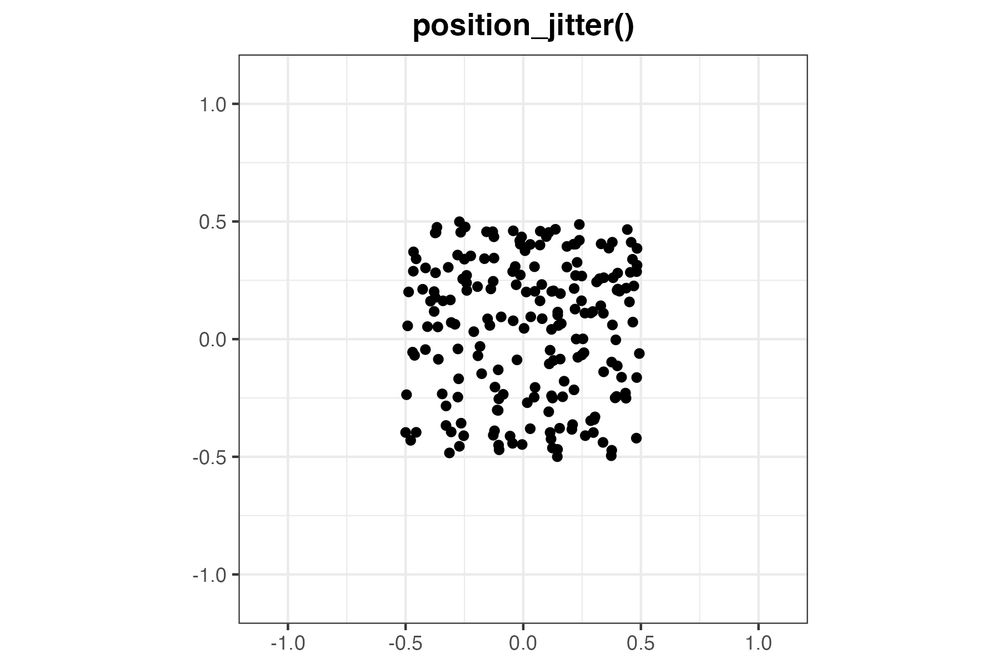
position_jitter()

position_jitter_ellipse()
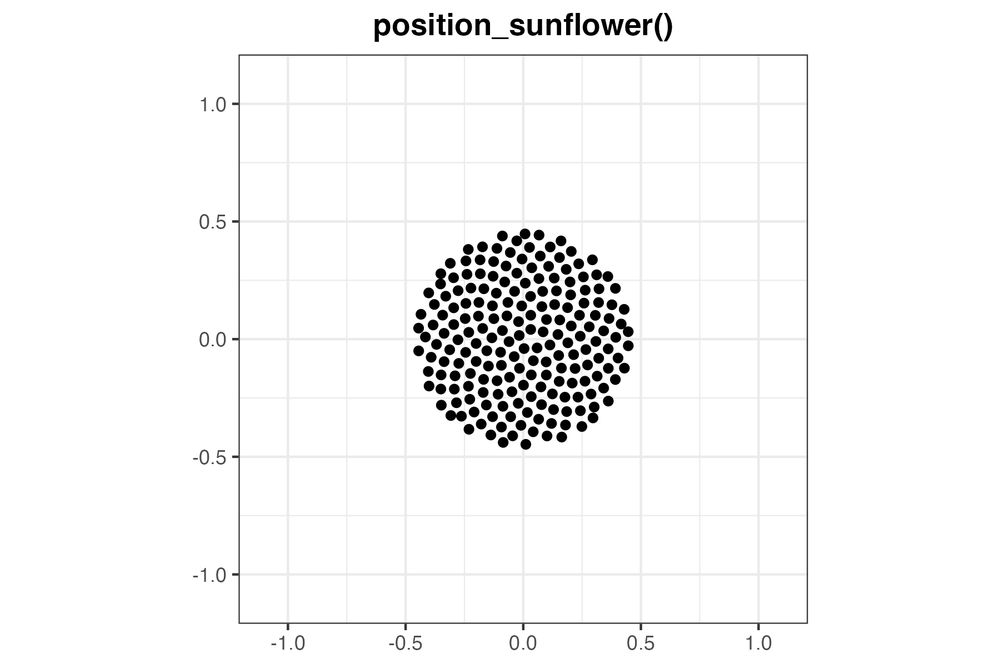
position_sunflower()

position_circlepack()
New visualization tool alert!
The vayr package version 1.0.0 is now on CRAN.
It contains position adjustments for ggplot2 that help with overplotting in pleasing ways. My favorite is position_sunflower().
- install.packages("vayr")
- alexandercoppock.com/vayr
#rstats #ggplot2 #dataviz
16.04.2025 19:53 — 👍 195 🔁 55 💬 3 📌 3

I am thrilled to share my paper on statistical training in archaeology. Thank you to @kjkillackey.bsky.social for the incredible illustration in the graphical abstract. www.sciencedirect.com/science/arti...
14.04.2025 08:15 — 👍 29 🔁 9 💬 1 📌 1
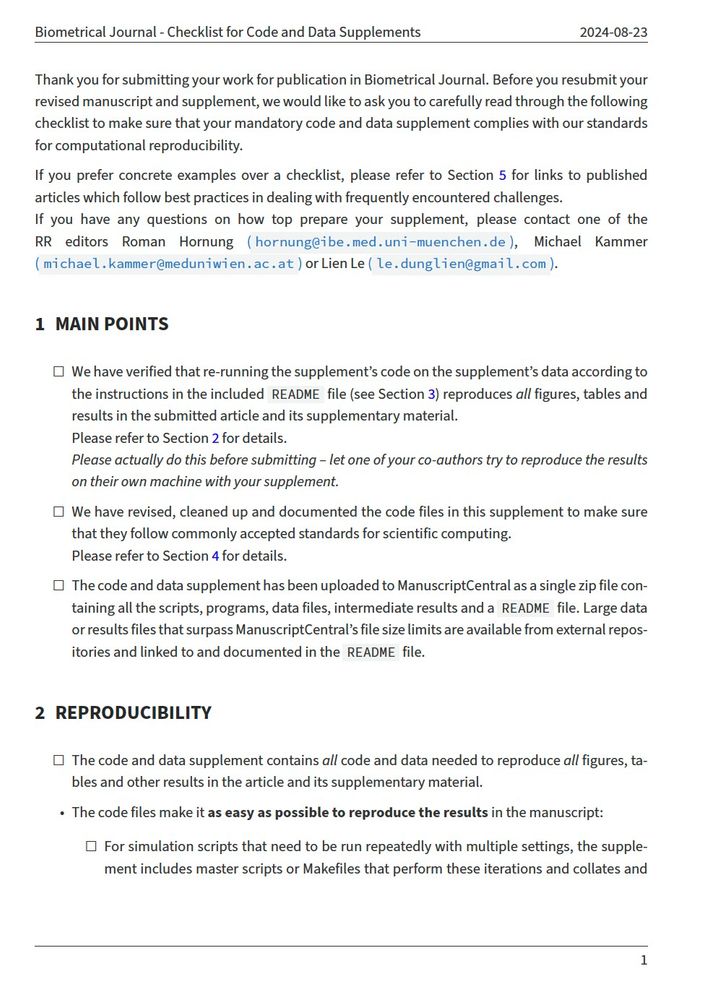
screenshot of a page of the Checklist for Code and Data Supplements from the Biometrical Journal

screenshot of a page of the Checklist for Code and Data Supplements from the Biometrical Journal

screenshot of a page of the Checklist for Code and Data Supplements from the Biometrical Journal

screenshot of a page of the Checklist for Code and Data Supplements from the Biometrical Journal
Here is an excellent checklist for reproducible research, this is from the Biometrical Journal, but is relevant for computational scientists in all fields:
onlinelibrary.wiley.com/page/journal...
Lots of best practices and specific tips for increasing the quality, usefulness & impact of papers
🧪
02.04.2025 19:31 — 👍 28 🔁 12 💬 1 📌 1

Ilya Tëmkin and Niles Eldredge’s (2007) depiction of the evolution of cornet designs. Vertical lines represent design lifespans, and horizontal lines denote vertical transfer between designs. Curved red lines indicate horizontal influence between designs, which becomes more prevalent in later periods. The phylogeny is reconstructed using morphological traits, revealing two main epochs, which represent the Stölzel (shaded left) and the Périnet valve systems (right). The markings (filled circles) point to key innovations such as valve number (violet), second valve slide shift (blue), bell exit position (green), and shape modification (yellow). (Full-color figure available in electronic version)
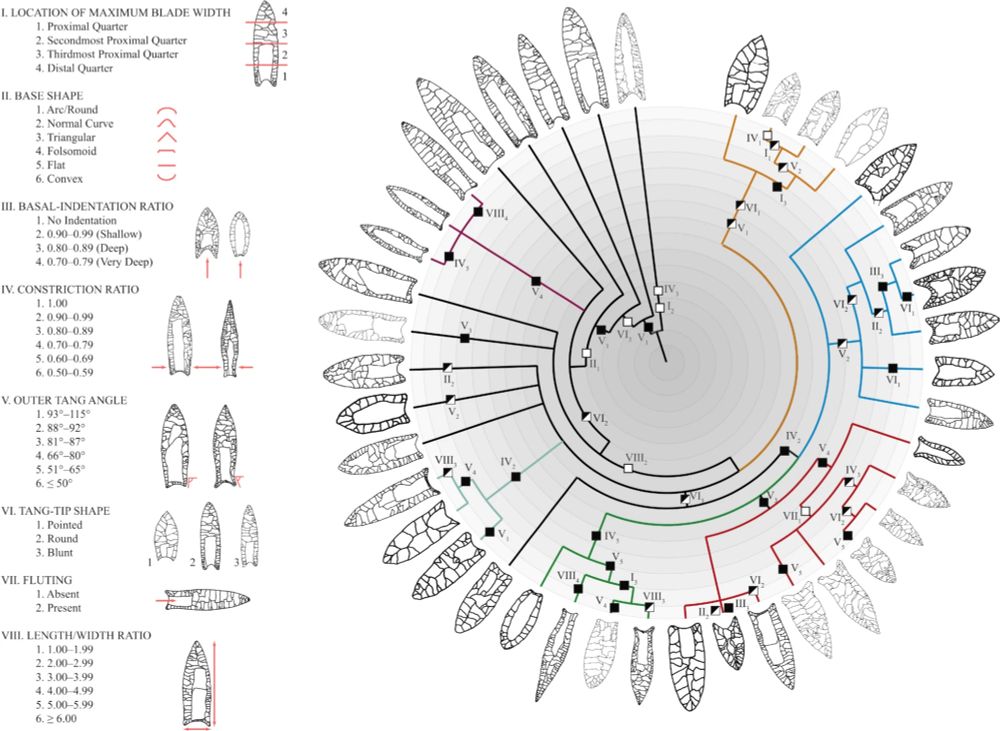
Phylogenetic tree of 41 classes of projectile points from the eastern United States, with clades shown in different colors (from O’Brien et al. 2014a, b). Roman numerals denote characters (traits), and subscript numbers denote character states. Open boxes indicate homologous changes (the result of shared ancestry); shaded boxes indicate parallel or convergent changes; and half-shaded boxes indicate characters that reverted to an ancestral state
Archaeology and the Construction of Artifact Lineages:
From Culture History to Phylogenetics 🏺🧪
Michael O’Brien, @svalver.bsky.social et al
link.springer.com/article/10.1...
Agrees with @nilese.bsky.social but documenting of (pre)history is only 1st step facing paleobiologists and archaeologists.
31.03.2025 17:01 — 👍 20 🔁 4 💬 1 📌 0
Here is our plain English summary of our new discovery of Middle Palaeolithic stone tools in East Asia:
theconversation.com/stone-tool-d...
published today in @us.theconversation.com 🧪
31.03.2025 20:31 — 👍 22 🔁 3 💬 0 📌 0
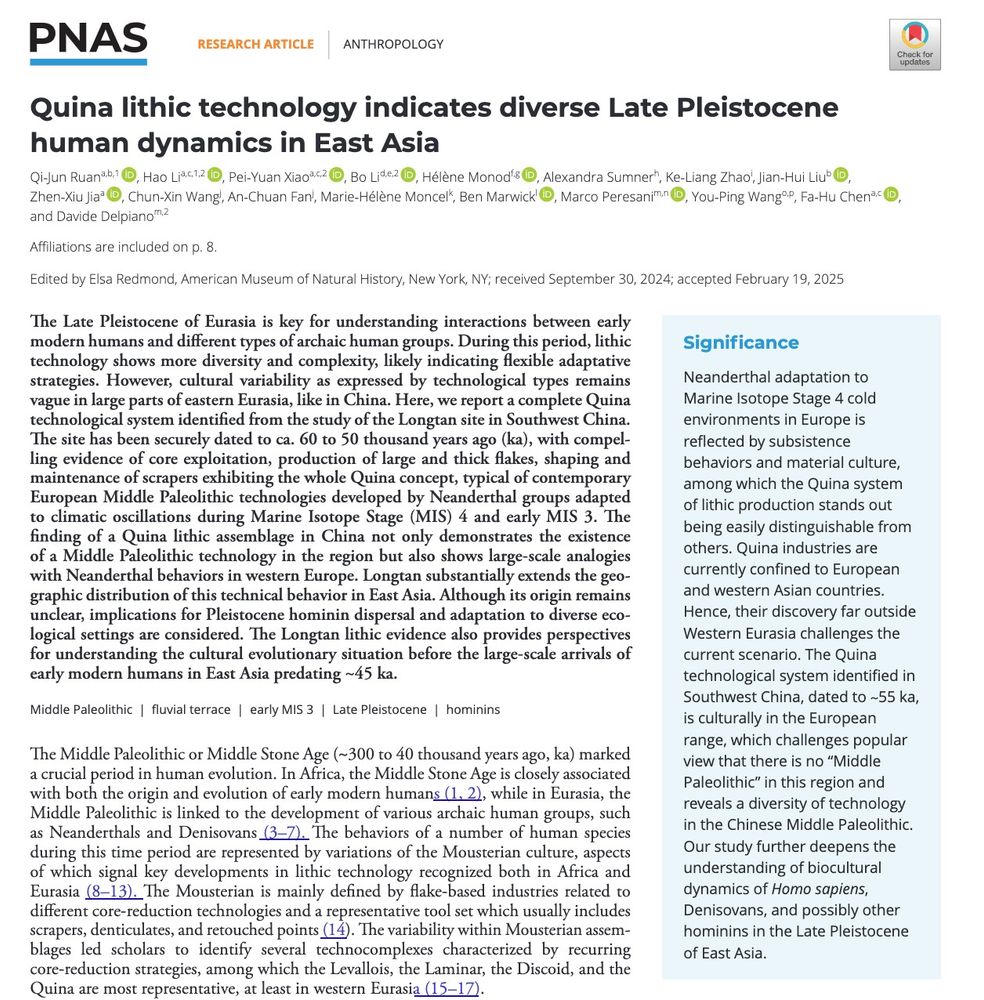
front page of the article
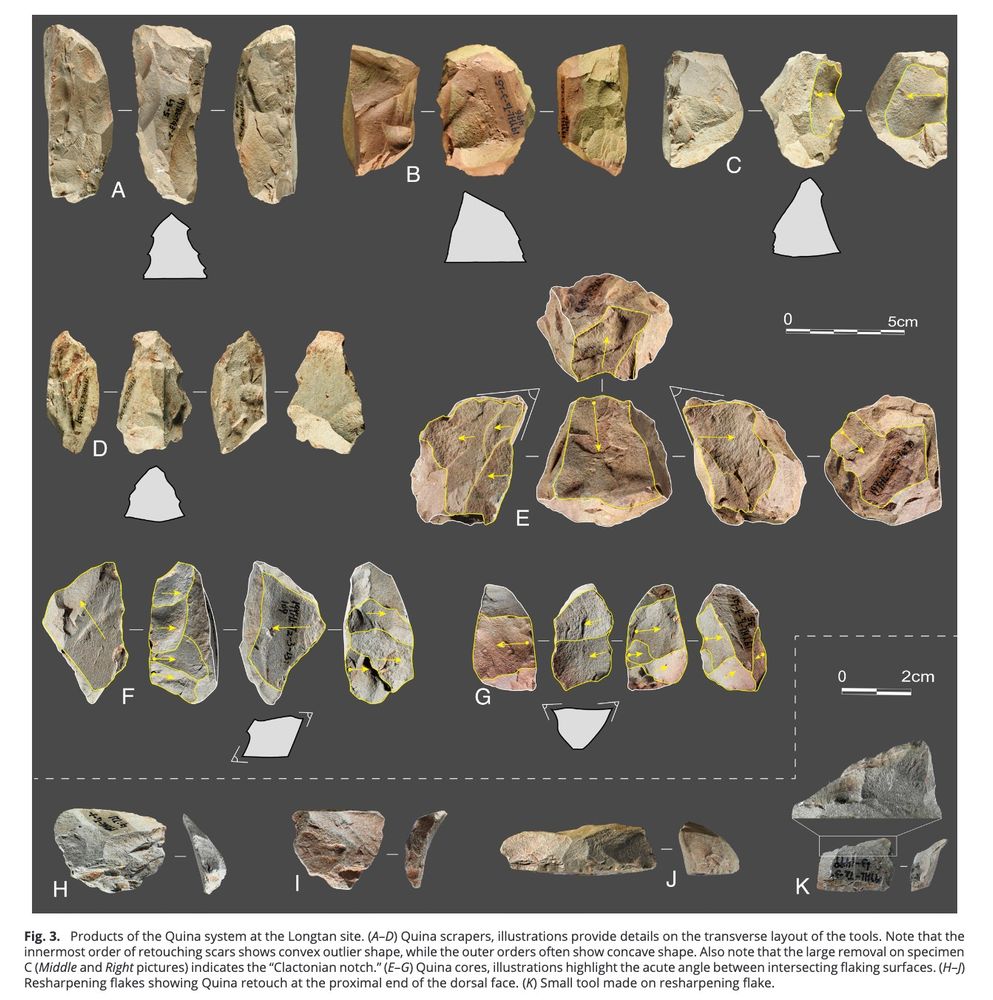
Figure. 3 from the article showing products of the Quina system at the Longtan site
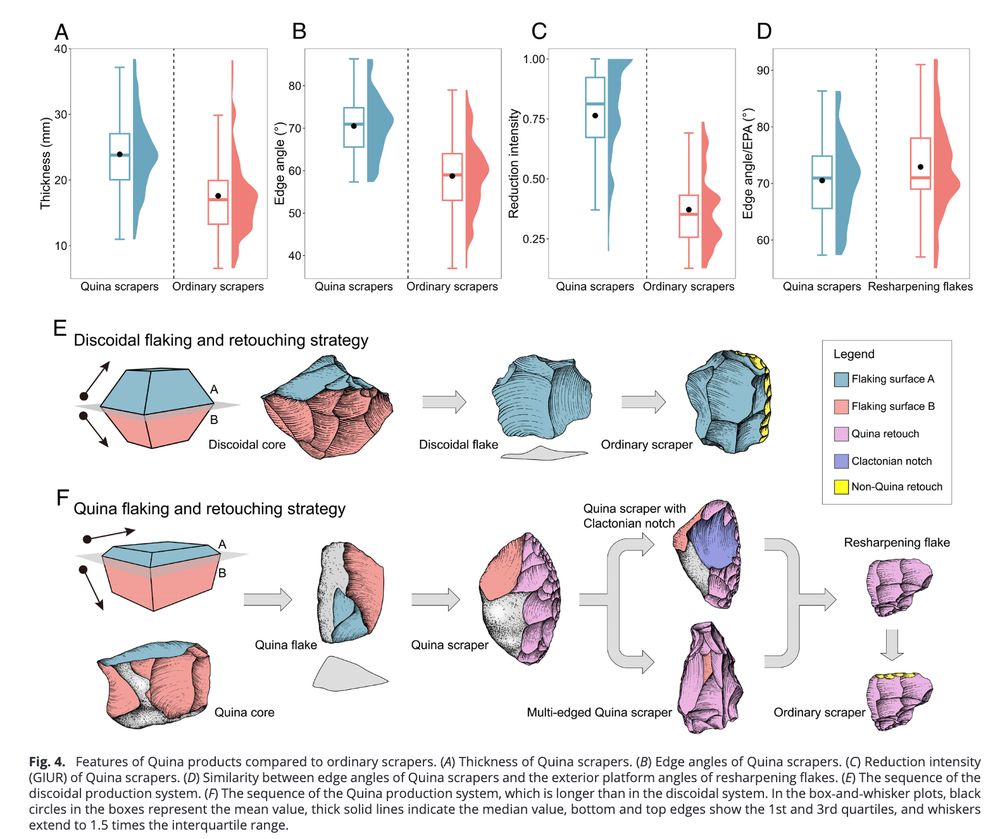
Figure 4 from the article showing features of Quina products compared to ordinary scrapers.
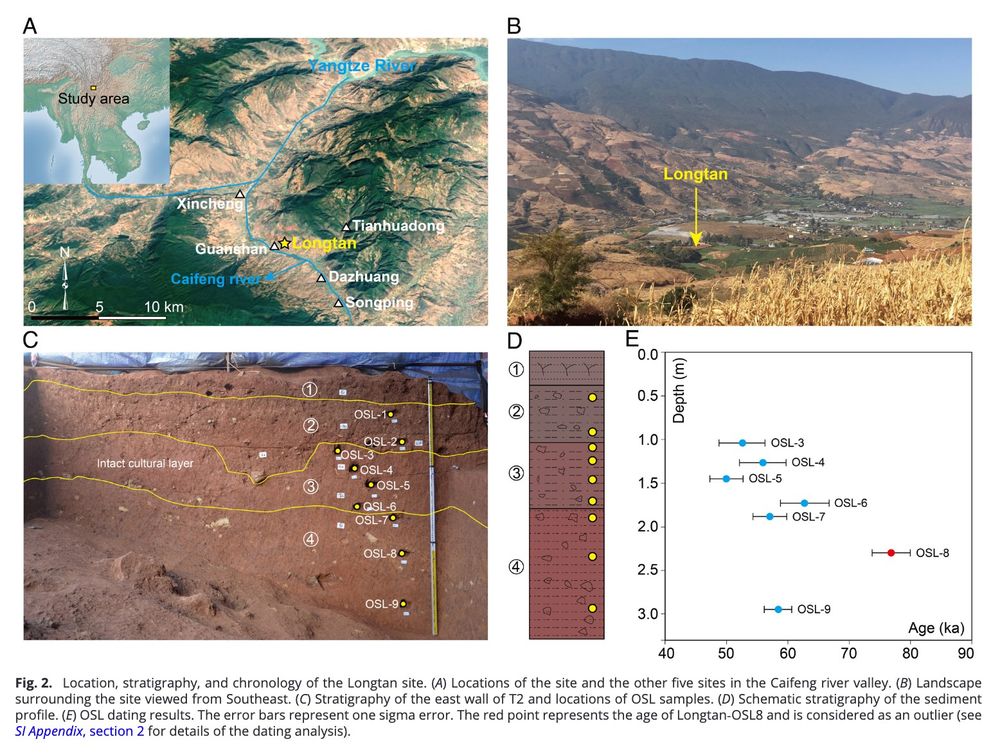
Figures showing the site location and stratigraphy
Our new paper reports a complete Quina technological system in the 60-50 ka assemblage at Longtan, Southwest China
Ruan, Q. et al. (2025) Quina lithic technology indicates diverse Late Pleistocene human dynamics in East Asia doi.org/10.1073/pnas...
🆓 faculty.washington.edu/bmarwick/PDF...
31.03.2025 20:07 — 👍 32 🔁 9 💬 2 📌 2
Our new paper on 3D GM has all the models and script available for others to apply our method. We use it to demonstrate interregional variability of Nubian Levallois cores but it has broader potential for lithic studies #openscience #archaeology #3DGM @icarehb.bsky.social @jmcascalheira.bsky.social
25.03.2025 14:50 — 👍 27 🔁 12 💬 0 📌 1
Personality psych & causal inference @UniLeipzig. I like all things science, beer, & puns. Even better when combined! Part of http://the100.ci, http://openscience-leipzig.org
research software, ecology, public health, open science
Research Fellow at The Kids Research Institute, Australia and University of Western Australia
she/her
michigan state university archaeology professor @MSUAnthropology.bsky.social
book reviewer: https://idigbooksanddirt.wordpress.com/
book lover - fish + dog owner - figure skater - mom
Science journalist covering archaeology, paleontology, and Earth science | Words for Science, New Scientist, Science News, and Live Science 🧪🏺
Assistant Professor at Department of Archeology and Heritage Studies, Aarhus University & Postdoc at the Globe Institute, Copenhagen University.
Historian of American religion at the Roy Rosenzweig Center for History and New Media and George Mason University.
https://lincolnmullen.com
https://rrchnm.org
Cutting-edge research, news, commentary, and visuals from the Science family of journals. https://www.science.org
Antiquity is a bimonthly review of world archaeology edited by Professor Robin Skeates. Please be aware that we sometimes share relevant images of human remains. https://antiquity.ac.uk/
Environmental Archaeologist at Crow Canyon Archaeological Center. Adjunct Prof. (LAT) at UNM Anthro.
https://jonathandombrosky.com/
Social science and other distractions. Old posts get deleted pretty quick.
https://kieranhealy.org /
https://theordinalsociety.com
Computational archaeologist at MPI EVA. #aDNA, #linguistics, #archaeology, #gis, #rstats, #haskell
[bridged from https://archaeo.social/@ClemensSchmid on the fediverse by https://fed.brid.gy/ ]
Archaeology PhD fellow @ AarhusUni
"Mesolithic Memes Reanalysed (MESMERYSE) - computational approaches to Mesolithic art of South Scandinavia and beyond"
Linguistics // Semiotics // Aesthetics
https://www.researchgate.net/profile/Lasse-Lukas-Herskind
Network Archaeologist - Geoarchaeologist - Computational Archaeologist
Cat mum with too many hobbies - traveller
minedogucu.com • teaching stats & data science by day • reading and writing stories by night • she/they/o/او • views my own • datapedagogy.com • bayesrulesbook.com • posts mostly about data science and education but also life things • 📍 Los Angeles
PhD candidate @sotonarch. 🧠💀🦴🦷🪨🦌
Interests: Neanderthals, lithics (handaxes), morphometrics, cultural transitions, symbolism and art, RStudio, osteology.
Lecturer in Sustainability at @UniOfYork. Archaeologist who investigates ancient economies to help make the world equitable and more sustainable. he/him
Computer Applications and Quantitative Methods in Archaeology (Australasian Chapter). Head to our website to become a member: au.caa-international.org





